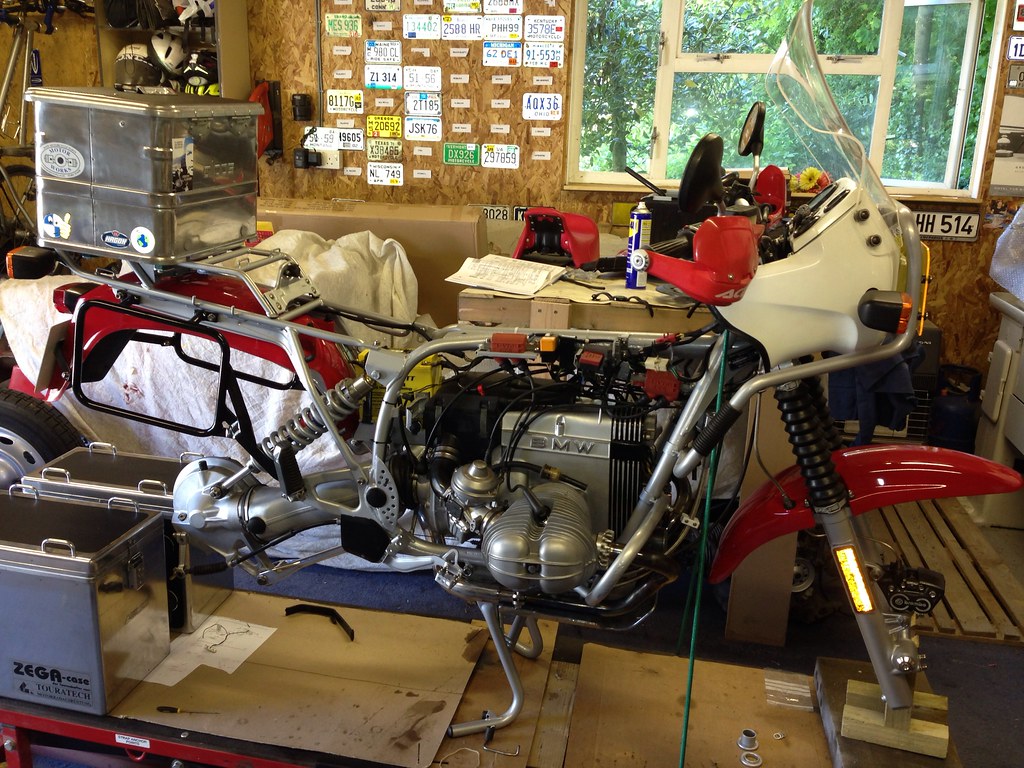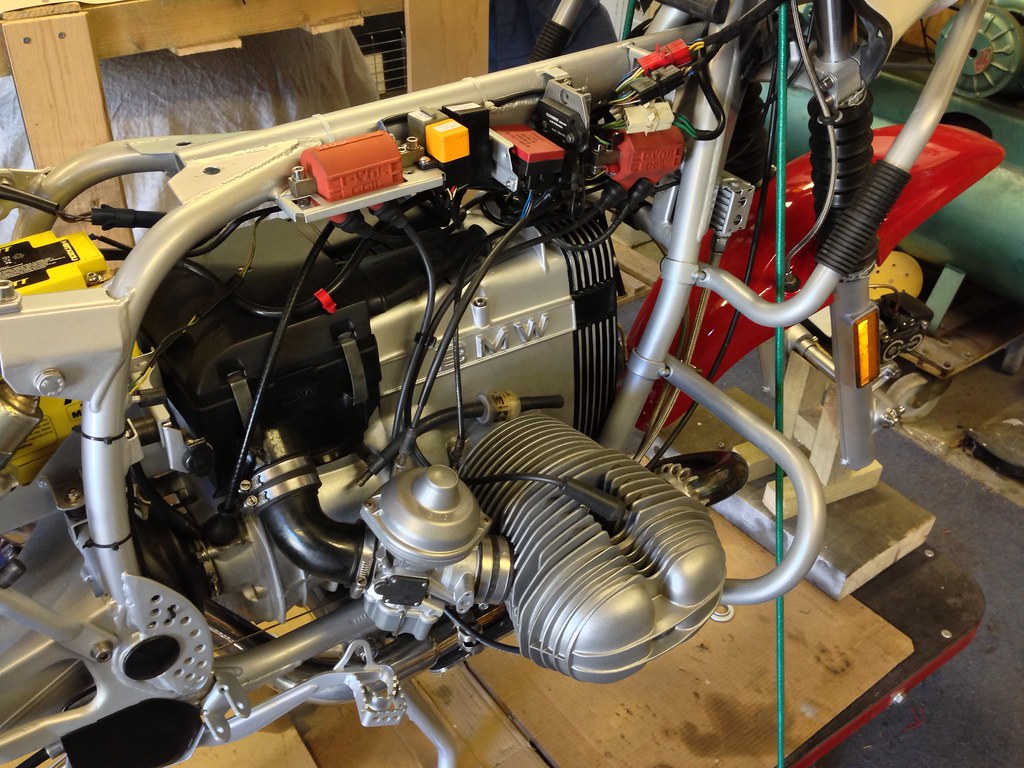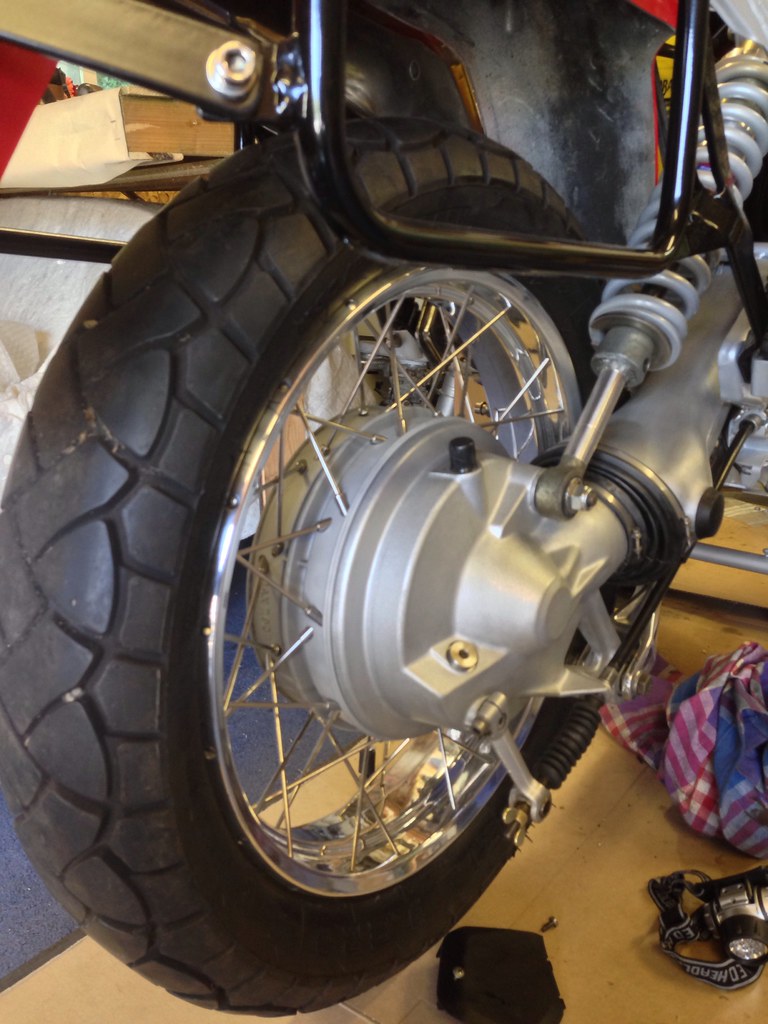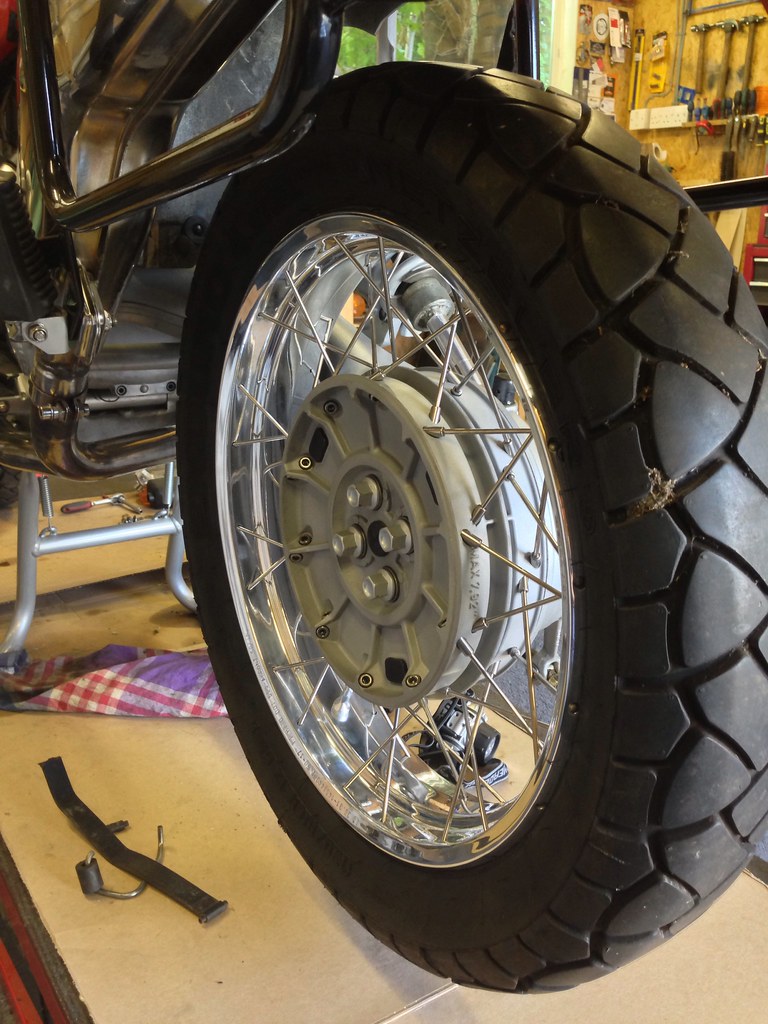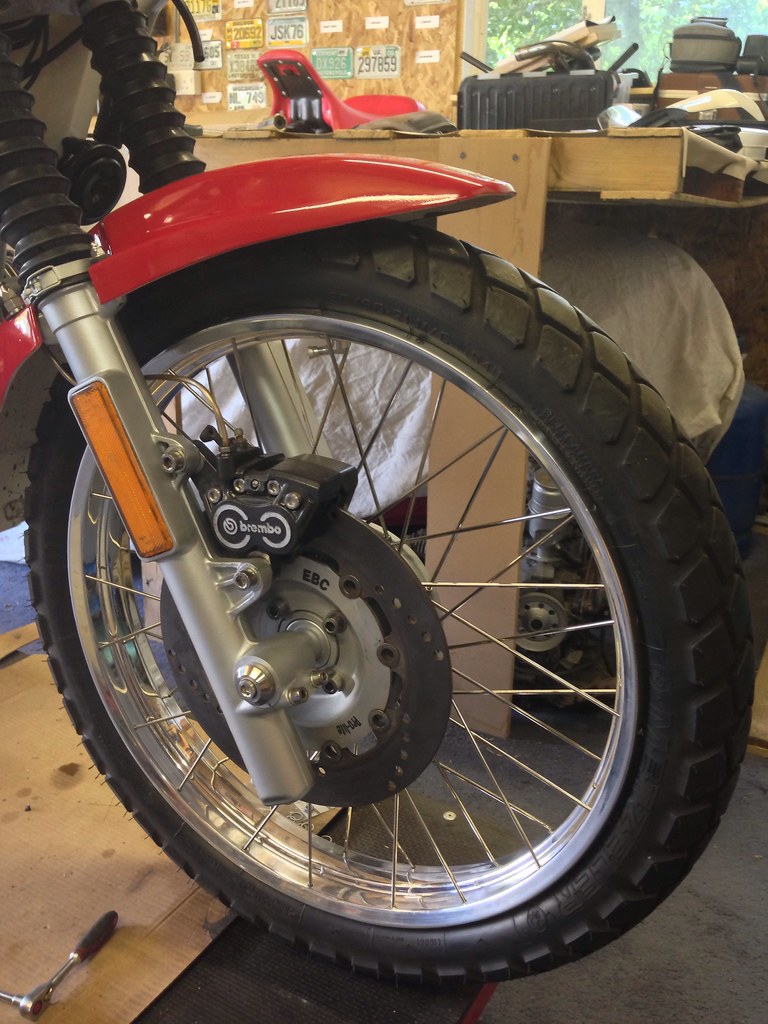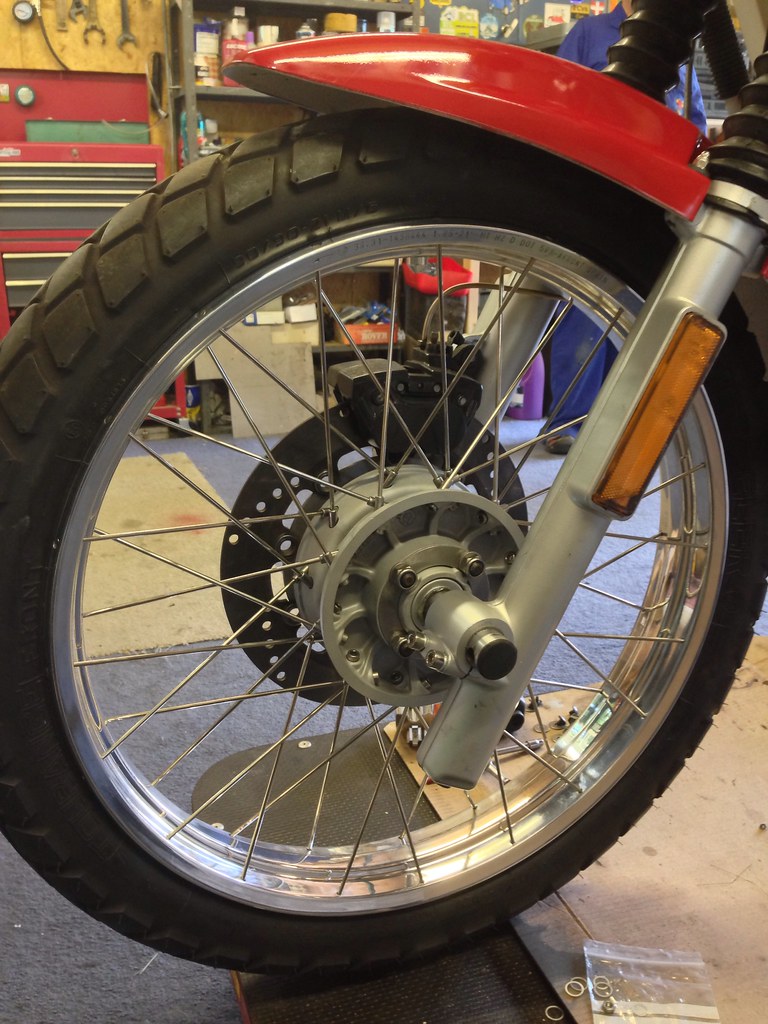Right. where to start? Well with the electrical woes, rather than struggle on with a subject I know nothing about it was time to bring in an expert, Chris Tonbridge (TunnerUK of this parish) who is about to start up his one man business less than a mile from me. Whilst he specialises in installations (heated grips, GPS, intercoms) he was happy to come along and have a look at the R100GS-PD. Well things weren't straightforward (all they ever?) so I'll itemise what he found -
1. I had gone over the wiring loom, and taken apart every connection and cleaned them out using a needle file but they were not as clean as I thought. In particular Chris found the red, white and black connector blocks alongside the top tube of the frame particularly faulty. But not just the corrosion. He noted that the 29yr old male and female connectors had lost their tension and no amount of cleaning would restore their 'springiness'. I was more interested in effectiveness than originality so Chris cut these off, installed new crimped bullets (using a professional crimper and not my crappy Draper device) with shrink insulation and memory tape.
2. He found an earth next to the neutral switch which I had failed to connect <doh>.
3. ...as well as the connectors in the rear light which I had not connected <doh squared>
4. ...and the brake light switch I had fitted back to front (oh for goodness sake).
5. I had earthed the starter motor to the engine which was wrong but Jim Cray had fitted a Police-spec rectifier and the black lead was 'hiding' behind the front engine casing. A phone call to Jim solved that one.
6. Chris got the horn work by staring it out. There was no rhymn nor reason to it, it just started working.
I can't speak highly enough of Chris's work and I wish him really well for the future. His business will also involve paint spraying (he's installing paint booths at the moment) as well as bead blasting and motorcycle electrics.
Yesterday I collected the rebuilt wheels from Hagons and they've made an exceptional job - highly polished rims, stainless steel spokes and nipples, bead blasted and lacquered hubs. And refitted the tyres.
Today we got the engine running which was a relief, and it's a bit lumpy at present as I have to alter the timing having fitted the American twin-plug coils.
I spent an hour bleeding the front brake but cannot get any sign of any pressure. I've used Gubson Easi-Bleed in the past but don't have a suitable cap so after using an entire 250ml bottle of DOT4 up, I have ordered a MityVac bleeder.
http://www.youtube.com/watch?v=PwAQ2qDQjPg

 )
)
